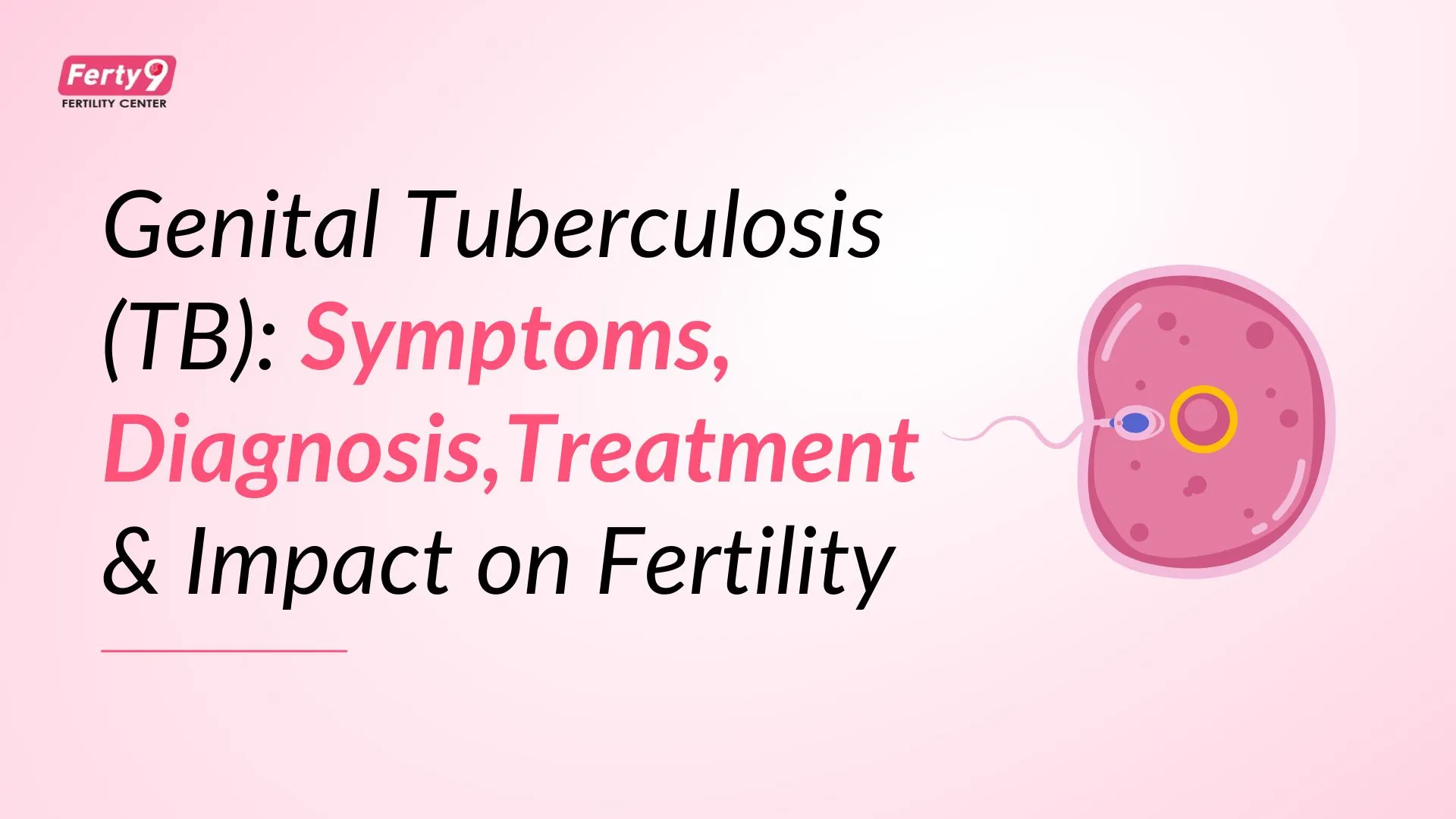What is genital tuberculosis?
Female genital tuberculosis (FGTB) usually develops subsequent to tuberculosis of the lungs or other organs and is caused by Mycobacterium tuberculosis (sometimes by Mycobacterium bovis and/or atypical mycobacteria). It spreads through the bloodstream or lymphatic system, usually from the lungs, and can affect fallopian tubes, uterus, and ovaries in women, and the epididymis and testes in men. This infection can cause significant damage to reproductive organs, leading to various health and fertility issues. The incidence of tuberculosis worldwide is 20%, while in India it is 10-12%.
Signs and symptoms
M. tuberculosis mostly affected women in reproductive age (15-45 years). Affects female genital organs, particularly fallopian tubes, causing infertility. Other Symptoms include:
- Low grade fever
- Sudden weight loss
- Menstrual irregularities
- Pelvic pain
- Abnormal vaginal discharge
- Painful intercourse
- Lump or swelling in pelvic area
- Pelvic mass
- Fluid accumulation in the abdomen or abdominal pain
- Cervical ulcers (rare)
If you experience symptoms like difficulty conceiving or a history of TB exposure, it’s very important to consult a fertility expert for proper evaluation and diagnosis. Early treatment minimizes reproductive organ damage and improves chances of fertility.
Diagnosis of Genital TB
To confirm the features of the disease and ensure timely treatment, genital TB diagnosis requires a thorough procedure that includes abdominal, pelvic, cervical, ultrasonography, histological evaluation, blood tests, and cultures.
(A) Abdominal examination: An abdominal examination can identify genital TB, which mostly affects the reproductive organs. Tenderness, masses, or accumulation of fluid will be examined by the doctor; in more serious cases, adhesions may be found.
(B) Pelvic examination: The internal examination of the reproductive organs involves a doctor visualizing the vagina and cervix, and performing a bimanual examination to feel the uterus, ovaries, and fallopian tubes. The doctors examine for tenderness, thickened or nodular fallopian tubes, fixed or adherent patches, and pelvic masses, which may indicate tubo-ovarian masses.
(C) Cervix examination: To diagnose tuberculosis, a detailed cervical examination is recommended. Doctors visually check for abnormalities such as ulcers, redness, inflammation, or abnormal discharge. The presence of TB bacteria or inflammatory changes in the vaginal canal may be revealed by laboratory examination of cervical swabs and tissue biopsies.
(D) Ultrasound examination:
- Ultrasound is a key imaging tool for detecting internal reproductive organ abnormalities. Symptoms include thickened fallopian tubes, tubo-ovarian masses, endometrial irregularities, and pelvis fluid collections.
- Ultrasound is particularly useful in detecting Asherman Syndrome, a condition characterized by adhesions within the uterine cavity. Symptoms include thin or discontinuous endometrial stripes, fluid collections, and tissue binding bands.
(E) Histopathological examination:
- Histopathological examination is the primary method for confirming TB.
- Pathologists examine clusters of immune cells formed in response to TB bacteria.
- Endometrial biopsy is common and involves small incisions in the abdomen.
- Hysteroscopy allows biopsies from specific uterine cavity areas, especially if Asherman Syndrome or other abnormalities are suspected.
- Surgical specimens, like severely damaged fallopian tubes, are sent for histopathological analysis.
Treatment of Genital Tuberculosis:
- Genital tuberculosis (TB) treatment involves a combination of anti-tuberculosis medications and surgical intervention. The standard regimen consists of multiple drugs taken orally for 6-9 months.
- DOTS, a WHO-recommended strategy, ensures that patients take their medication correctly under the direct supervision of a doctor. DOTS has significantly improved treatment success rates for all forms of TB, including genital TB.
- In cases of drug-resistant TB, a longer course may be necessary. Completing the course is very important, and patients are monitored for side effects to stop the progression of disease.
Impact of Genital Tuberculosis on Reproductive Organs
- Damage and Blockage of Fallopian Tubes: Genital TB is the most common cause of infertility in women, as it causes inflammation and scarring, preventing the fertilization and embryo travelling to uterus, leading to tubal factor infertility and an increased risk of ectopic pregnancy.
- Uterine Issues: TB can cause damage to the endometrium, the lining of the uterus, to thin or scar (Asherman’s syndrome). This can make it difficult for an embryo to implant and can also lead to menstrual irregularities like absence of the cycles.
- Ovary issues: TB can affect the ovaries and lead to adhesions, cysts, and impaired egg production which leads to impact on ovarian reserve and function.
- Pelvic Inflammatory Disease (PID): Severe form of TB can cause chronic pelvic pain and further damage to the reproductive organs.
Effect of Genital TB on Fertility
Increased risk of infertility: Genital TB is one of the severe diseases that can cause both primary (never conceived) and secondary (difficulty conceiving after a previous pregnancy) infertility.
Lower success rates with fertility treatments: Women with genital TB often have a poor response to ovulation and lower success rates with IVF process due to the damaged reproductive organs and compromised egg quality.
Increased risk of miscarriage: Damage to the uterine lining and potential genetic abnormalities linked to TB can increase the risk of pregnancy loss.
Ectopic pregnancy: Blocked or damaged fallopian tubes due to TB significantly increase the risk of ectopic pregnancy.
Conclusion
Genital TB if present in any individual significantly impacts fertility by damaging reproductive organs and impairing their function. Early diagnosis and treatment are very important for the disease and many individuals may still require the support of advanced fertility treatments of ART technologies (IVF) to conceive.
























